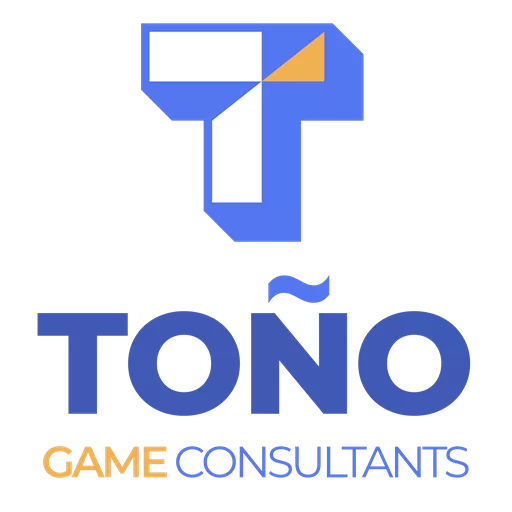Ever wanted to make your own video game (or just learn how to create a game) but didn’t know where to start?
You’re in the right place!
Creating a game might sound intimidating, but once you break it down into steps, the process becomes not only doable but exciting. In this guide, we’ll cover the essential stages, from shaping your first idea to prototyping and planning, so you can start your journey with confidence.
And here’s the best part: you don’t need to be a veteran programmer or a pro artist to get started. With the right mindset and tools, anyone can begin building their dream game.
Step 1: Dream Up Your Game Idea
Every game begins with inspiration. Maybe it’s a mechanic you can’t stop thinking about, a story you’d love to tell, or a “what if” moment you want to see come alive.
But ideas are fragile. If you don’t shape them into something meaningful, they disappear as quickly as they arrive.
That’s where finding meaning in your concept comes in. Instead of just saying “I want to make a racing game”, ask yourself: What experience do I want the player to have? What makes my game different from everything else out there?
👉 Dive deeper here: Crafting Meaning.
💡 Pro Tip: Ideas are exciting, but they can also feel overwhelming. If you’re not sure how to shape your concept into something playable, grab our free Game Dev Starter Kit. It’s packed with brainstorming prompts, a quick playtesting guide, and a lightweight player profile template to help you get clarity fast.
Step 2: Build Your Dream Team
Making a game solo is possible, but even for small projects, having the right roles covered gives you range, speed, and perspective. The key is not how many people you have, but whether these responsibilities are actually being fulfilled:
-
Game Designer → The value-finder. Ensures the team is working toward a vision players will actually care about. (Related: Game Project Manager)
-
Programmer → Turns design ideas into systems and mechanics, while keeping performance and stability in check.
-
Artist → Defines the look and feel of your world, from characters to environments.
-
QA (Quality Assurance) → Tests relentlessly so the game feels polished and stable.
-
Producer → Keeps the team organized, aligned, and on schedule.
In a small indie team, one person may wear multiple hats, or even all of them. What matters most isn’t the number of people, but the clarity of ownership: knowing which role is responsible for which outcome, and making sure the player experience always stays at the center.
Step 3: Plan Your Game
With your idea and team in place, it’s time to make a plan. This doesn’t mean locking everything down forever, it means setting direction so the team isn’t flying blind.
Two tools are especially powerful here:
-
Story Mapping → Organize features around the player’s journey instead of a random task list. This keeps everyone focused on delivering an experience, not just building mechanics.
-
Time Estimation → Helps you size each piece of work so you can prioritize realistically. Estimation doesn’t have to be perfect, but it should keep your scope achievable.
Together, these keep your plan realistic. You’ll know what matters most and how long it might take, which prevents the classic trap of overpromising too early.
Step 4: Build a Prototype
Before you pitch or scale, you need proof that your idea actually works. Prototypes are where you test mechanics, gather feedback, and make adjustments. Think of it as your game’s laboratory: try, fail, learn, repeat.
There are several types of prototypes, each serving a different stage of validation:
-
Paper Prototype → The fastest, cheapest way to test. Draw the core loop or mechanics on paper and run through it with your team. Great for validating basic flow and pacing.
-
Board Game Prototype → If your mechanics involve systems, strategy, or resource management, try them out as a board game. This strips away the graphics and code so you can focus on gameplay decisions.
-
Rulebook Prototype → Can players understand your game if you just explain the rules? Writing a rulebook forces you to clarify objectives, edge cases, and player actions. If it’s confusing on paper, it will be confusing in code.
-
Digital Prototype → Many teams skip straight here, and that’s okay, but keep it lean. Don’t spend weeks polishing art or coding features. In fact, you shouldn’t spend more than a couple of days getting something playable. Use placeholder art, basic shapes, and with one mechanic. The goal isn’t to impress with graphics; it’s to validate controls, pacing, and technical feasibility before you commit real resources.
The key is iteration: prototype → playtest → collect feedback → adjust. Every round reduces uncertainty, helps you find fun faster, and saves you from expensive mistakes later.
Step 5: Create a Business Case
Games don’t fund themselves, and since revenue comes only after launch, you need a plan to cover costs while you build. Common paths include self-funding, crowdfunding, publisher deals, or investors, each with their pros and trade-offs.
If you look for external funding, the critical part of the business case is knowing how much your game should make. Covering costs isn’t enough. A healthy project should aim for at least 3x your development budget, ideally closer to 4x as a safety margin. That way, you can pay your team, reinvest, and fund future projects. Think of it this way: if your game costs $200k to make, plan for $600k–$800k in revenue, not just breaking even. That’s what turns a one-off project into a sustainable studio.
Step 6: Choose Your Engine
This is by far the most important decision you’ll make in development. Every step that follows — design choices, workflows, pipelines, performance targets, and even your business terms — will be shaped by this choice.
Your engine doesn’t just define how your team builds the game; it also determines royalties, licensing, and who you partner with for years to come.
Whether you go with Unity, Unreal, Godot, or a custom engine, do your due diligence. Compare not just features, but also costs, platform support, community, and long-term stability.
Before committing, it’s smart to run an engine proof. This means building a small test project to confirm your chosen engine can actually support your game’s vision. It’s far better to discover limitations early than to realize halfway through development that your engine can’t deliver what you need.
Remember: switching engines mid-project is one of the most expensive mistakes you can make. Take the time now to ensure your choice aligns with both your creative vision and your financial strategy.
Step 7: Build a Game Pitch
By this point, you’ve defined your idea, tested it through prototypes, chosen your engine, and explored funding options. Now it’s time to package everything into a pitch, a document that communicates your project quickly and clearly to outsiders.
Think of the pitch as the front door to your game project. You’ll have deeper documents (design docs, art bible, business case), but the pitch gives anyone, from investors to potential teammates, a fast, digestible entry point into your project.
You would want to also include:
-
High Concept → A short description that sums up what your game is about.
-
Art Bible → Visual samples that define the look and feel of your world.
-
Soundscape → A description (and a few samples, if possible) that capture the mood, tone, and atmosphere of your game through audio.
The goal isn’t to overwhelm with detail, it’s to spark confidence and curiosity. Your pitch should convince others that you know what you’re building, why it matters, and how you’ll get it across the finish line.
A clear, compelling pitch makes it easier to attract investors, publishers, and collaborators, or simply rally your existing team around a shared vision.
Step 8: Market Your Game
Finally, even the best games need players. Marketing isn’t about hype, it’s about building awareness early and letting potential players connect with your project.
Share devlogs, post on social media, build a landing page, and talk to your community. Treat marketing as another development discipline, not an afterthought.
Wrapping It Up
Making a game is an exciting journey, but it’s also a complex one. From the first spark of an idea to the moment players get their hands on it, every step matters, from choosing the right engine to prototyping, planning, and building a solid pitch.
If you want guidance to keep your project on track, avoid common pitfalls, and shape a design that truly connects with players, check out our Game Design Offer. It’s built to help you refine your vision and turn it into a game that’s not just playable, but unforgettable.
FAQ: How to Make a Game
What’s the first step in making a game?
Start with your core idea. Define what kind of experience you want players to have, and sketch it out on paper. This is where inspiration and meaning come together.
Do I need a full team to make a game?
Not necessarily. Many indie developers wear multiple hats. What matters most is covering the key roles (design, programming, art, QA, and production).
What is prototyping in game development?
Prototyping is building quick, rough versions of your game to test mechanics and ideas. It can be done with paper, board games, rulebooks, or a simple digital version. The goal is to validate whether your ideas are fun and feasible.
How do I choose a game engine?
Your engine choice is one of the most important decisions in development. It determines your workflow, technical feasibility, royalties, and even long-term business considerations.
What’s a game pitch, and why do I need one?
A pitch is a digestible package that sells your idea to others, investors, publishers, or collaborators. It combines your high concept, art bible, soundscape, monetization model, and business case into a clear story about your game.
How much money do I need to make a game?
Budgets vary widely, but the critical part is aiming for sustainability. If you’re seeking external funding, plan for at least a 3x–4x return on investment. If you’re self-funded, your goals can be financial or purely creative.
What’s the difference between prototyping and playtesting?
Prototyping builds rough versions of your game; playtesting puts them in front of real people to collect feedback. Together, they help refine scope, catch issues early, and keep your design player-focused.
Do I need to worry about scope creep when starting small?
Yes. Even small projects can balloon if priorities aren’t clear. Tools like story mapping and time estimation help you keep control of scope while still building something meaningful.


